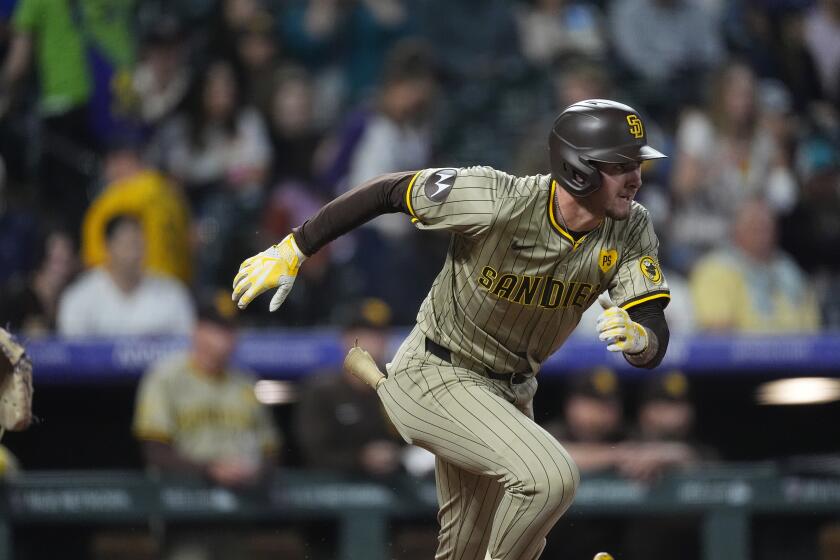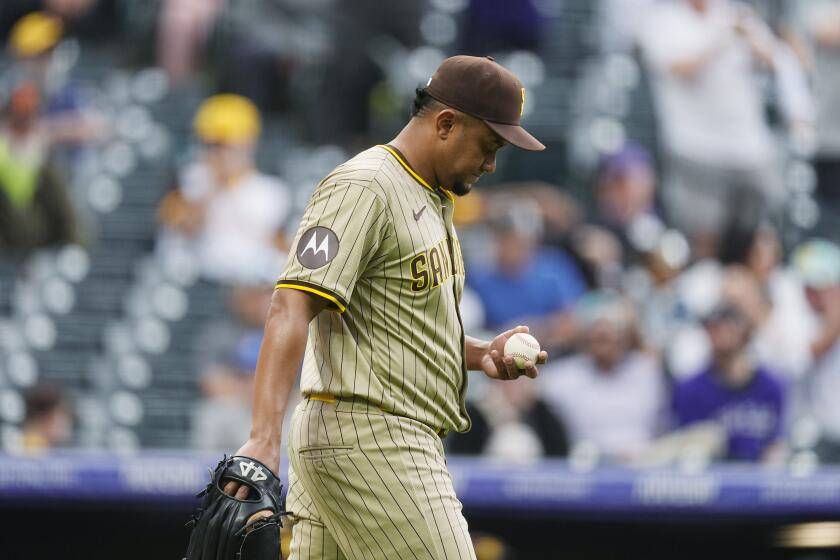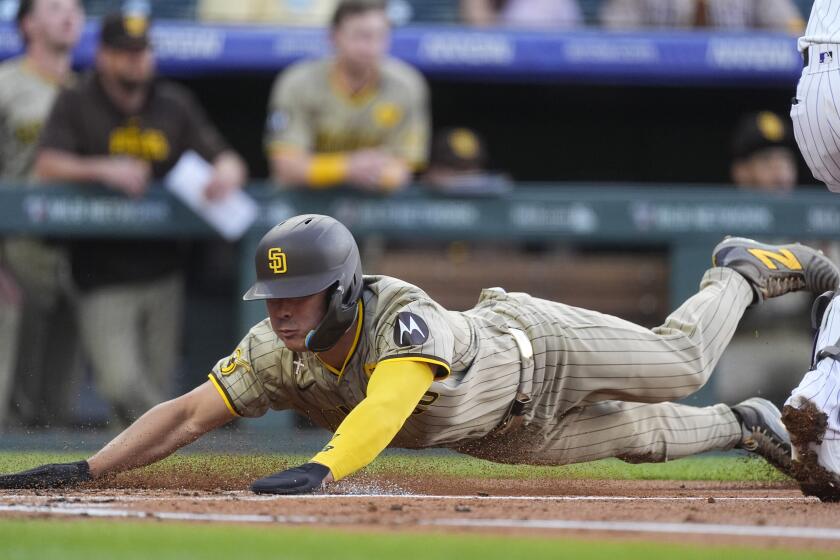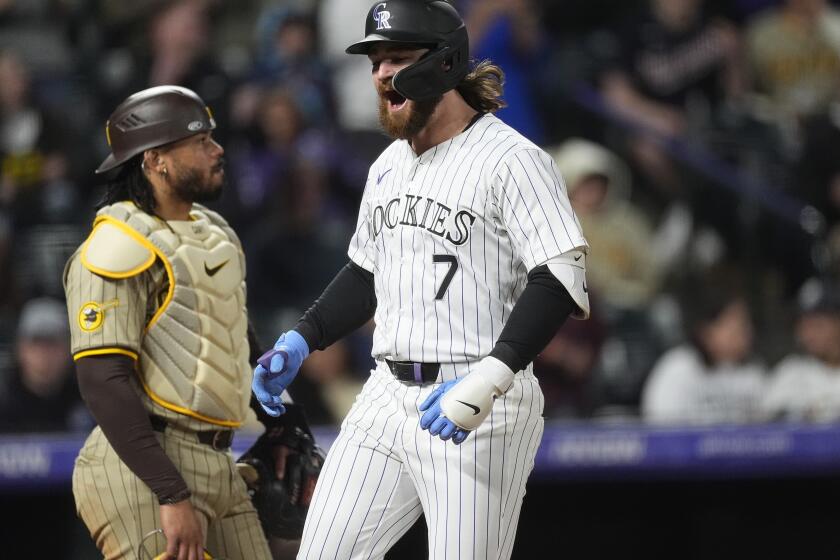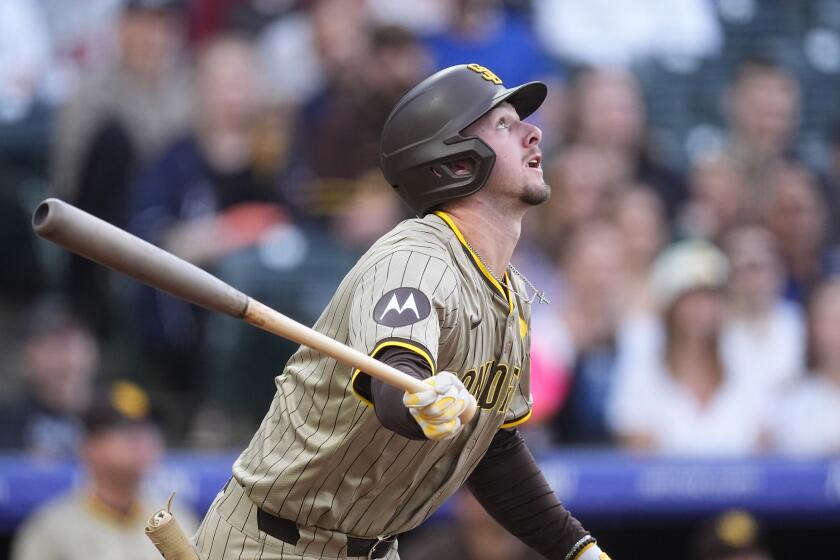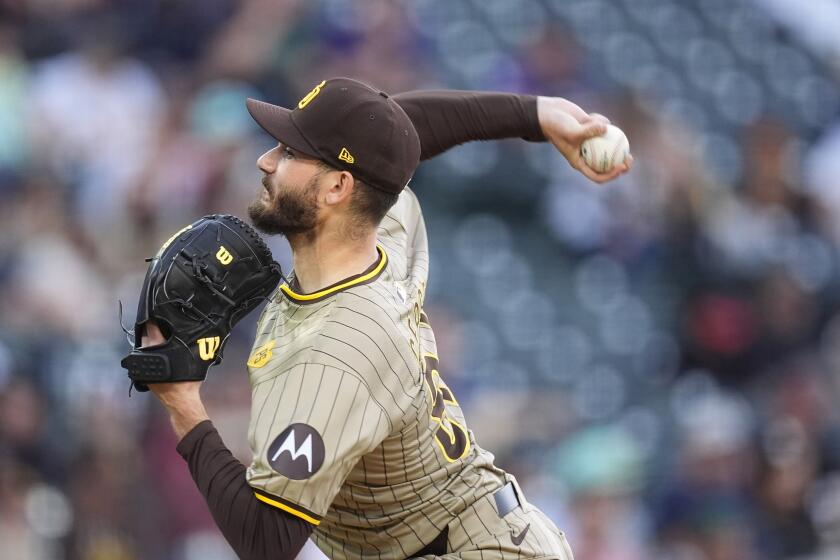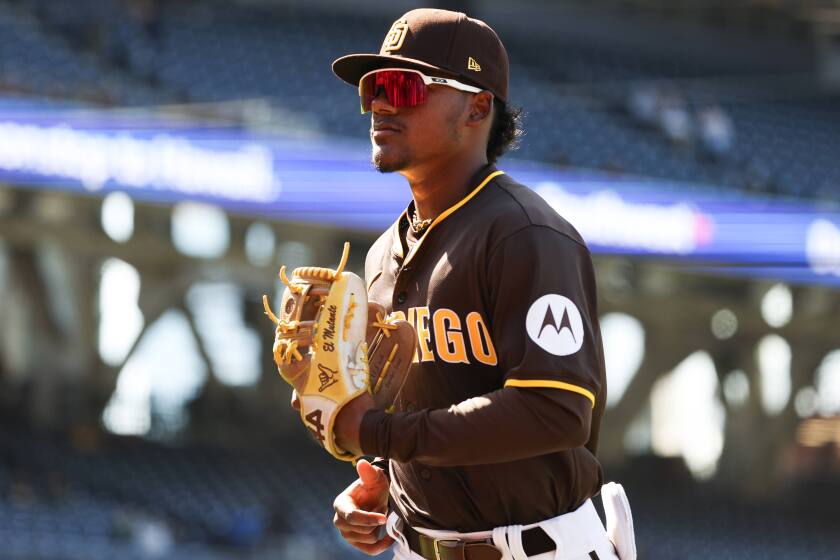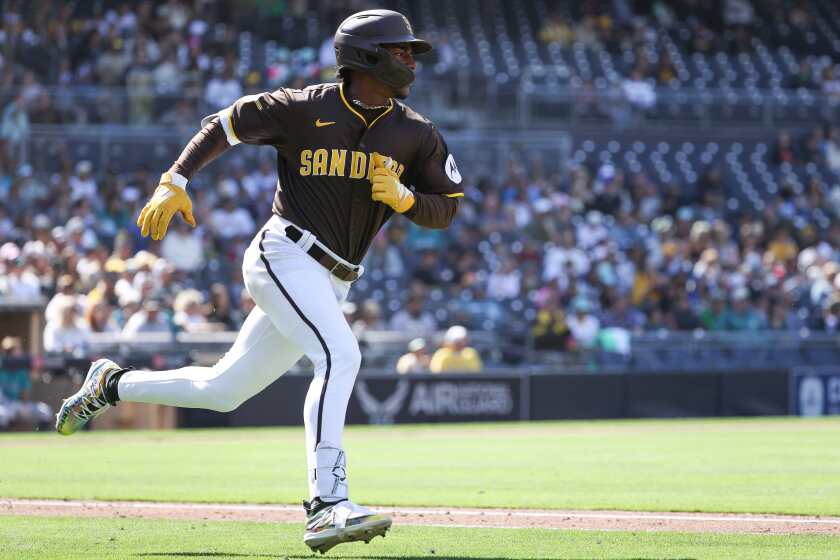Padres build contender by turning homegrown product into imports
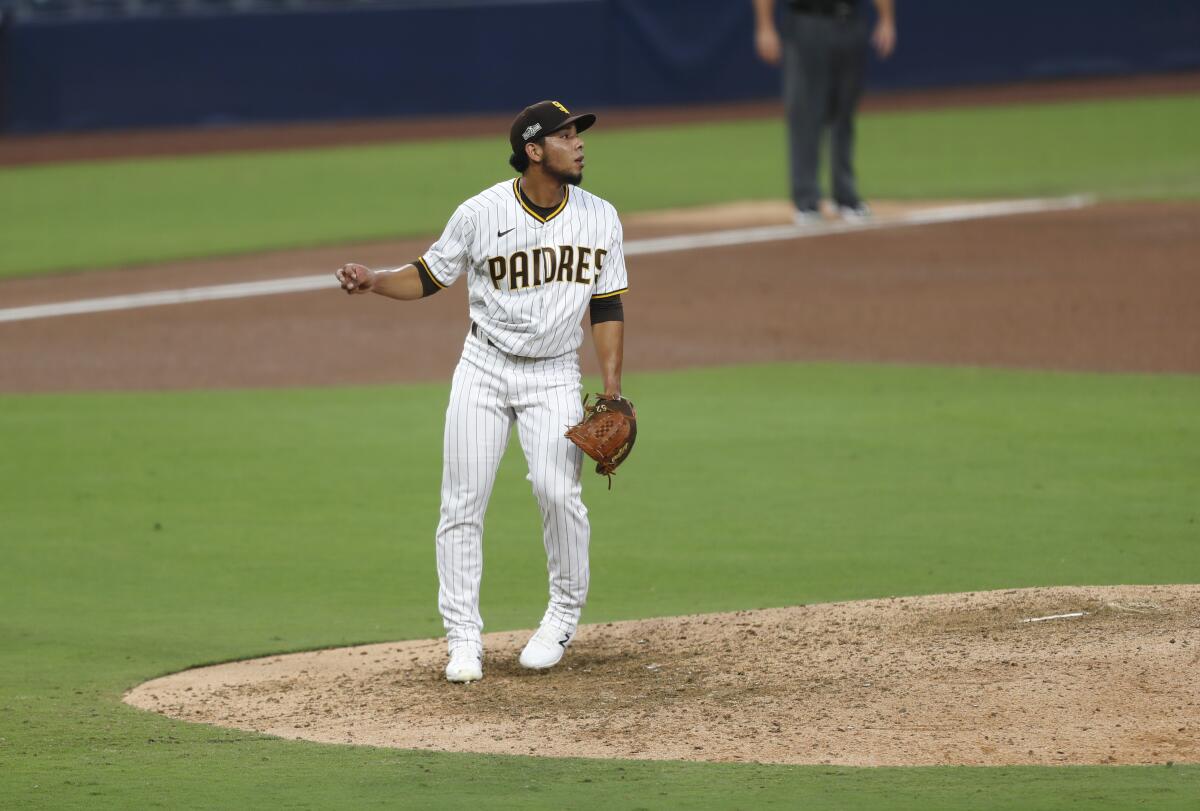
Padres have spent a lot of prospect capital in trading for more than a dozen veterans in the last year
The Padres committed almost $80 million to acquire teenagers from Cuba, the Dominican Republic and other Latin American nations in 2016.
Since that year, they drafted in the top eight every June and spun various other moves to finagle 17 more picks among the first three rounds of those drafts. The team spent nearly $55 million signing those 22 draftees.
All along, as the major league product floundered until this past season, the widespread belief was many of those prospects would progress to one day form the core of a perennial contender.
They may yet.
But now that the Padres have broken their 13-year postseason drought and seem poised to begin a run of success, the reality is a large number of those young players are no longer in the organization. They were used to assemble a roster made up of veterans from elsewhere.
The franchise that since 2017 has annually had what was considered to be one of the game’s top three minor league systems has parlayed that growth from within into one of the least-homegrown rosters in the major leagues.
Just in the past two days, in order to get Blake Snell from the Tampa Bay Rays (a deal made official shortly after noon Tuesday) and Yu Darvish from the Chicago Cubs, the Padres traded away seven of their top 16 prospects, as judged by MLB.com. That followed an August trade spree in which, among other moves, the Padres dealt five of their top 11 prospects to get starting pitcher Mike Clevinger and catcher Austin Nola.
Prospect lists are as fluid as they are arbitrary. There is no crystal ball telling how good a player in his late teens or early 20s will be when he reaches the major leagues. The rankings constantly change as prospects improve (or don’t), advance to the majors or are traded away.
But they provide a barometer of how organizations are building from within — culling and developing talent.

Of the top 30 players in FanGraphs’ ranking of the Padres’ 50 best prospects in April, 13 have been used in deals that acquired no fewer than seven veteran players who played significant roles in last season’s playoff run and/or are expected to be major contributors this season. Going back to November 2019, when Padres General Manager A.J. Preller went on a 10-day acquisition binge, four more players who were in the past four years widely considered among the Padres’ top 30 prospects were used to get four such veterans.
Of the 34 players currently on the 40-man roster who seemingly have a good chance to be on the Padres’ projected 26-man roster on opening day, 11 were acquired with the currency of prospects the Padres had been stockpiling since 2016. (That does not include Clevinger, who will miss ’21 following Tommy John surgery.)
The Padres have 22 players on their 40-man roster who were acquired via trade. That’s second in the majors to the Miami Marlins’ 25 and exactly twice as many as the Dodgers. The Padres’ 12 homegrown players are tied for fourth fewest in the majors and exactly half as many as the Dodgers.
Perhaps the most startling thing about this raid of the prospect cupboard is how much is left on the top shelf.
While no one proved untouchable, No. 3 prospect Luis Patiño — traded to pry Snell from the Rays — was the only one of the four players considered sacred internally who was sent away.
MacKenzie Gore, considered by many to be the top pitching prospect in the game, remains. As do shortstop CJ Abrams, ranked as the team’s No. 19 prospect in the minors by Baseball America, and catcher Luis Campusano, who homered in his fourth plate appearance in the majors last season.
Before August, the Padres had six players in MLB.com’s top 100 prospect rankings. They have four remaining, having parted with Patiño and Taylor Trammell (the organization’s No. 5 prospect at the time and part of the August trade that brought Nola and relievers Austin Adams and Dan Altavilla to San Diego.)
That trade is one of the moves that demonstrates the calculus of this roster.
Trammell was acquired the previous July in a multiteam trade in which the Padres sent Franmil Reyes and Logan Allen to the Cleveland Indians.
The Darvish trade is an even more striking example. Zach Davies, the major leaguer who went with four prospects to the Cubs, was acquired along with center fielder Trent Grisham in a November 2019 trade that sent former highly ranked prospects Luis Urias and Eric Lauer to the Milwaukee Brewers.
Snell came at a cost of Patiño, recent draft picks Cole Wilcox and Blake Hunt and Francisco Mejía, who was the minor league’s top catching prospect when the Padres got him from the Indians in exchange for relievers Brad Hand and Adam Cimber in July 2018.
Those listening carefully over the past few years have heard Preller talk about the potential to flip prospects almost as much as he talked about them reaching the majors as a Padre.
“It just (creates) more capital and more opportunities,” Preller said in September in regard to prospect acquisition leading to other acquisitions.
Given the capricious nature of prospect fulfillment and factoring in the unknown of how Darvish, Snell and the other veterans acquired with young talent will perform, these trades can’t yet be accurately graded as to how Preller and his staff did.
But what can be said is that this, it turns out, is what having a top farm system is for.
==================================
Trading places
A look at some of the veterans the Padres acquired in the past 13 months and the top prospects dealt to get them, with their organizational ranking at the time by MLB.com in parentheses (not all parts of each trade are listed):
Jurickson Profar: C Austin Allen (19)
Tommy Pham/Jake Cronenworth: INF Xavier Edwards (5)
Tim Hill: RHP Ronald Bolanos (14)
Trevor Rosenthal: OF Edward Olivares (20)
Mitch Moreland: IF Hudson Potts (16), OF Jeisson Rosario (19)
Austin Nola/Austin Adams/Dan Altavilla: OF Taylor Trammell (5)
Greg Allen (w/Mike Clevinger): SS Gabriel Arias (7), LHP Joey Cantillo (9), INF Owen Miller (11)
Blake Snell: RHP Luis Patino (3), RHP Cole Wilcox (7), C Blake Hunt (14)
Yu Darvish/Victor Caratini: SS Reginald Preciado (11), OF Owen Caissie (13), OF Ismael Mena (15), SS Yeison Santana (16)
Go deeper inside the Padres
Get our free Padres Daily newsletter, free to your inbox every day of the season.
You may occasionally receive promotional content from the San Diego Union-Tribune.

